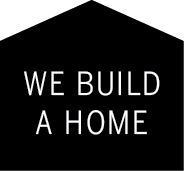Going off-grid in the city
Elon Musk announcing the Tesla Home Battery. Image courtesy of GeekyGadgets.
There are three utilities that conventional urban homes take advantage of: electricity, gas and water/sewage. Going completely off-grid would imply ditching all three. But primarily, when the term “off-grid” is thrown around, it addresses the electrical grid.
Electricity
It’s incredibly frustrating to open up a hydro (electricity) bill. Half the cost is for delivery and fees alone. We already pay some seriously high rates for electricity in Ontario, which are only set to skyrocket in the near-future by as much as 40%. So much of our energy is nuclear, supplied by ageing power stations and is delivered via grids and infrastructure established half a century ago. There’s no shortage of uncertainty. Sure would be nice to go completely off-grid — to smugly sigh and sit back as the politicians and utility companies mess about.
Alas. We will be plugging in to the grid. For the following reasons:
- Capital costs. The grid is right at our door step and so the costs to connect are fairly minimal compared what they would be if we were to set ourselves up off-grid. If we were in the country, going off-grid would be a no-brainer, since the cost to connect would be significantly higher.
- Space. Even though our energy requirements will be 80-90% less than an average home, we would still require a decent-sized array of solar panels to power it. This can be tricky on a small, urban site.
- Storage. Solar panels only produce energy when there’s sun. But we often demand energy when there is no sun. The supply does not always keep up with the demand, and visa versa. So there has to be a storage solution. From what I understand, the storage process is inefficient— lots of energy gets lost in the process.
Planning for the future.
There is hope that we will be able to go off-grid (or at least become partially self-sustainable) in the near future. Tesla is set to announce their home battery technology at the end of the month. We are anxiously awaiting the details. According to theverge.com,
“The technology promises to store things like solar energy or potentially a mix of that and cheap electricity during off-peak hours, helping keeping state power grids balanced and trim bills by 20 to 30 percent for some customers.”
That would solve our storage issues. The space for our solar panels has been ear-marked for the roof of the garage that Mark has designed in to the master plan. The capital costs would definitely be the largest obstacle to overcome. Government incentive programs would go a long way here.
Mark has been coveting a Tesla car since its debut. And now the Tesla house.
What about those other utilities?
Gas. We will be fossil-fuel independent. Hooray! We won’t be bringing a gas line in to our house. We won’t need gas for heat or hot water. For water, we are going with an efficient electric heat-pump hot water tank.
Water and sewage. It just makes sense to connect to water and sewage in the city — to guarantee clean drinking water and treatment of waste water. I don’t think that the building code, nor the city, would even permit otherwise. What doesn’t make sense is that we flush our toilets and water our lawns with clean drinking water. Our house will be grey-water-ready. We don’t have the capital to get it going yet, but we don’t want to preclude it. What this means is that one day, we will be able to flush our toilets with used bath water instead of clean drinking water.
In short, we won't be going off-grid. We'll be 1/3, with a lofty potential for 2 out of 3. We’ll take it. And do everything we can to future-proof our home against rising energy prices.




